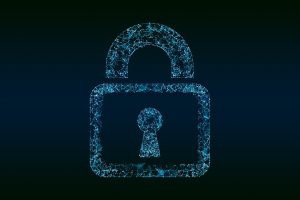
Why Your Business Needs a Security Control Assessment in 2025
Introduction
In today’s fast-paced digital landscape, businesses rely on technology more than ever to operate efficiently, serve customers, and drive innovation. However, with increasing technological advancements comes an ever-growing threat landscape, making cybersecurity a critical priority for organizations worldwide. As cybercriminals continue to evolve their tactics, businesses must implement robust security measures to protect their systems, data, and reputation.
A Security Control Assessment (SCA) is a structured approach to evaluating an organization’s cybersecurity framework, identifying weaknesses, and ensuring compliance with industry regulations. As we enter 2025, businesses must recognize the importance of regular SCAs to defend against cyber threats, prevent data breaches, and meet regulatory requirements. This article will explore why your business needs a Security Control Assessment in 2025, what it entails, and how it can safeguard your organization’s future.
The Growing Cybersecurity Threat Landscape in 2025
1. Increasing Frequency of Cyberattacks
Cyberattacks have become more sophisticated, frequent, and damaging over the years. According to cybersecurity reports, the number of ransomware attacks, phishing scams, and data breaches has surged, impacting businesses of all sizes. In 2025, organizations must proactively assess their security controls to mitigate these threats before they cause significant harm.
2. The Rise of AI-Powered Cyber Threats
With the rapid advancements in Artificial Intelligence (AI), cybercriminals are leveraging AI-powered attacks to bypass traditional security measures, create realistic phishing scams, and exploit system vulnerabilities faster than ever before. Businesses must implement advanced security assessments to stay ahead of these threats.
3. Increased Regulatory Requirements
Governments and regulatory bodies continue to tighten compliance standards, requiring businesses to adopt more stringent security practices. Frameworks such as NIST 800-53, ISO 27001, SOC 2, GDPR, and FedRAMP demand ongoing security assessments to ensure data protection and regulatory compliance.
4. Cloud Security Challenges
As businesses increasingly migrate to cloud-based environments, securing AWS, Azure, and Google Cloud platforms becomes a priority. Misconfigurations, unauthorized access, and lack of visibility in cloud environments pose significant risks. A Security Control Assessment helps identify and remediate these vulnerabilities.
What is a Security Control Assessment?
A Security Control Assessment (SCA) is a comprehensive evaluation of an organization’s cybersecurity posture, ensuring that security controls are effectively implemented and functioning as intended. It helps businesses:
✅ Identify weaknesses in IT systems, networks, and applications.
✅ Ensure compliance with industry standards and regulatory requirements.
✅ Strengthen access controls, encryption, and security monitoring.
✅ Reduce the risk of data breaches, ransomware, and insider threats.
✅ Develop a proactive security strategy that aligns with business goals.
Key Components of a Security Control Assessment
A well-executed Security Control Assessment includes the following components:
1. Risk Assessment & Threat Identification
Businesses must conduct a thorough risk assessment to identify potential threats, vulnerabilities, and attack vectors. This step involves:
- Analyzing past security incidents and assessing emerging cyber risks.
- Conducting penetration testing and vulnerability scans.
- Reviewing third-party risks and supply chain security.
2. Review of Security Policies & Access Controls
Assessing security policies and access controls ensures that only authorized personnel can access sensitive systems and data. This includes:
- Implementing Zero Trust principles.
- Enforcing Multi-Factor Authentication (MFA).
- Strengthening Identity and Access Management (IAM) policies.
3. Compliance Audit & Regulatory Alignment
Security assessments must align with industry regulations and compliance standards to avoid penalties and reputational damage. Businesses should:
- Evaluate compliance with NIST, ISO 27001, SOC 2, HIPAA, GDPR, and FedRAMP.
- Identify gaps in documentation, processes, and technical controls.
- Ensure audit readiness for regulatory assessments.
4. Network Security & Endpoint Protection Review
As cyber threats target networks and endpoints, organizations must assess:
- Firewall configurations, intrusion detection & prevention systems (IDS/IPS).
- Endpoint security solutions, antivirus software, and patch management.
- Incident response capabilities to quickly detect and respond to threats.
5. Security Awareness Training & Social Engineering Testing
Human error remains a leading cause of cybersecurity breaches. A strong security awareness program helps employees recognize and avoid threats such as phishing, malware, and social engineering attacks.
6. Continuous Monitoring & Incident Response Planning
A robust monitoring system enables businesses to track, detect, and mitigate cyber threats in real time. Organizations should:
- Implement Security Information and Event Management (SIEM) solutions.
- Establish an Incident Response Plan (IRP) to respond effectively to security incidents.
- Conduct regular security audits and penetration tests to validate security controls.
Why Your Business Needs a Security Control Assessment in 2025
1️⃣ Prevent Costly Data Breaches – Cybercrime is expected to cost businesses $10.5 trillion annually by 2025. SCAs help prevent financial losses and legal consequences.
2️⃣ Stay Ahead of Cyber Threats – AI-driven cyberattacks demand advanced security measures to defend against evolving threats.
3️⃣ Ensure Compliance & Avoid Penalties – Governments are increasing regulatory requirements, making security assessments essential for legal compliance.
4️⃣ Secure Cloud & Hybrid Work Environments – Remote work and cloud migration require strong security controls to protect sensitive data.
5️⃣ Build Customer Trust & Business Resilience – Companies with strong security measures gain a competitive advantage by ensuring data protection.
Why Choose K2CyberTek for Security Control Assessments?
✅ Proven Industry Expertise – 10+ years of experience in cybersecurity, compliance, and risk management.
✅ Tailored Security Assessments – Customized solutions based on your industry, regulatory requirements, and business size.
✅ Advanced Testing & Monitoring – Cutting-edge security testing tools, penetration testing, and 24/7 threat monitoring.
✅ Regulatory Compliance Assurance – Expertise in NIST, ISO 27001, SOC 2, HIPAA, and FedRAMP compliance.
✅ Actionable Insights & Risk Mitigation Plans – We provide detailed reports and security roadmaps to enhance your protection.
Conclusion
As cyber threats continue to rise in 2025, businesses must take proactive security measures to protect their operations, data, and reputation. A Security Control Assessment (SCA) provides the insight, protection, and compliance alignment necessary to stay ahead of evolving risks. Don’t wait until a security breach impacts your business—secure your future today!



